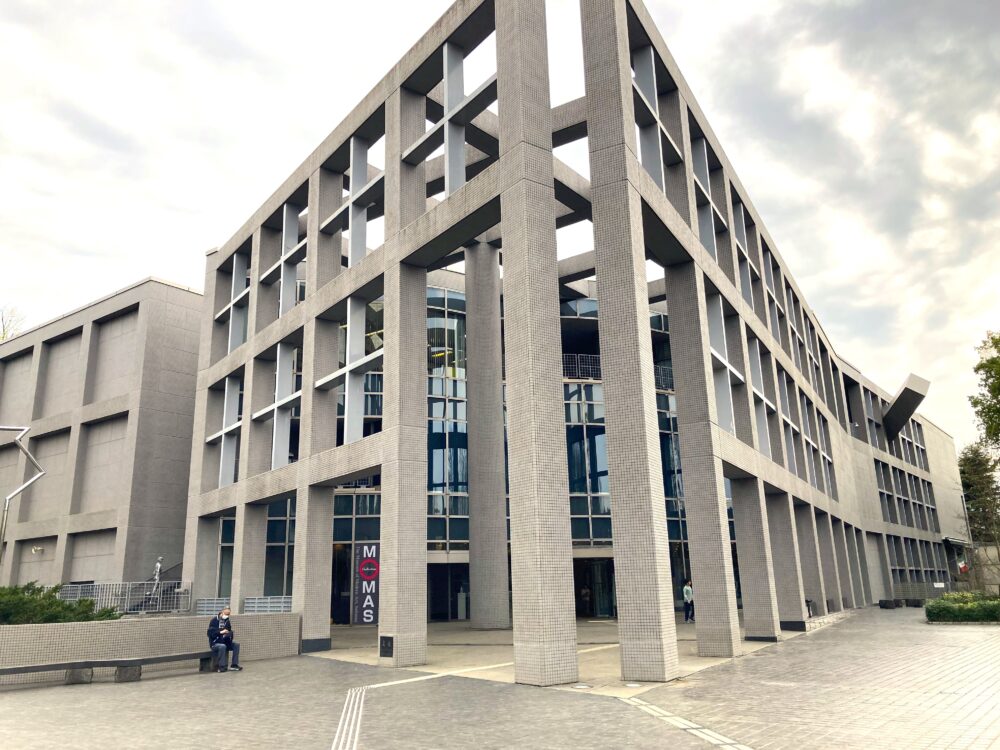
“Modern Art Meets Contemporary Architecture—Only in Saitama”
Located quietly in a corner of Kita-Urawa Park, the Museum of Modern Art, Saitama, opened in 1982. While it’s a calm and relaxing space, its presence is strong—and for architecture fans, it’s especially exciting: this is the very first museum designed by world-renowned architect Kisho Kurokawa, also known for the National Art Center, Tokyo and the Van Gogh Museum Annex in Amsterdam.
From the outside to the interior, the museum features a minimalist, modern design. As soon as you step inside, you’ll notice that this is not just a place to view art—it’s a place to experience the building itself.
A Unique and Diverse Collection
MOMAS offers a wide range of works—from French Impressionism and the École de Paris to modern Japanese painting and contemporary art. Whether it’s a piece you recognize from a school textbook or a surprising discovery by an artist you’ve never heard of, the museum opens your eyes to new perspectives.
One highlight is the museum’s deep connection to local artists. Out of around 3,700 works in the collection, more than 2,000 are by artists with ties to Saitama. This strong focus on local talent gives the museum a unique character. As you walk through the galleries, you’re likely to pause and think, “I never knew Saitama had such amazing artists.”
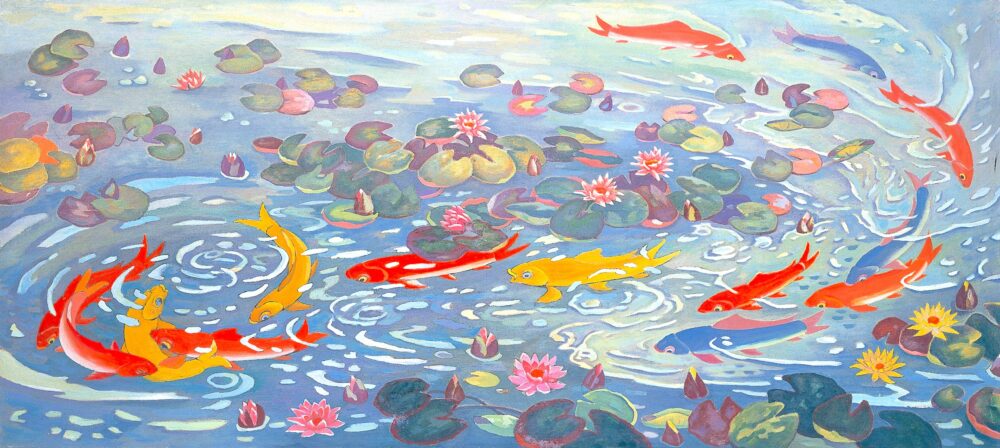
Explore the Collection at the Museum of Modern Art, Saitama
Please note that the contents of the collection exhibitions change regularly. Before visiting, we recommend checking the museum’s official website for the latest updates.
▶ Museum of Modern Art, Saitama Website
Claude Monet, “Haystacks at Giverny, Sunset” (1888–1889)
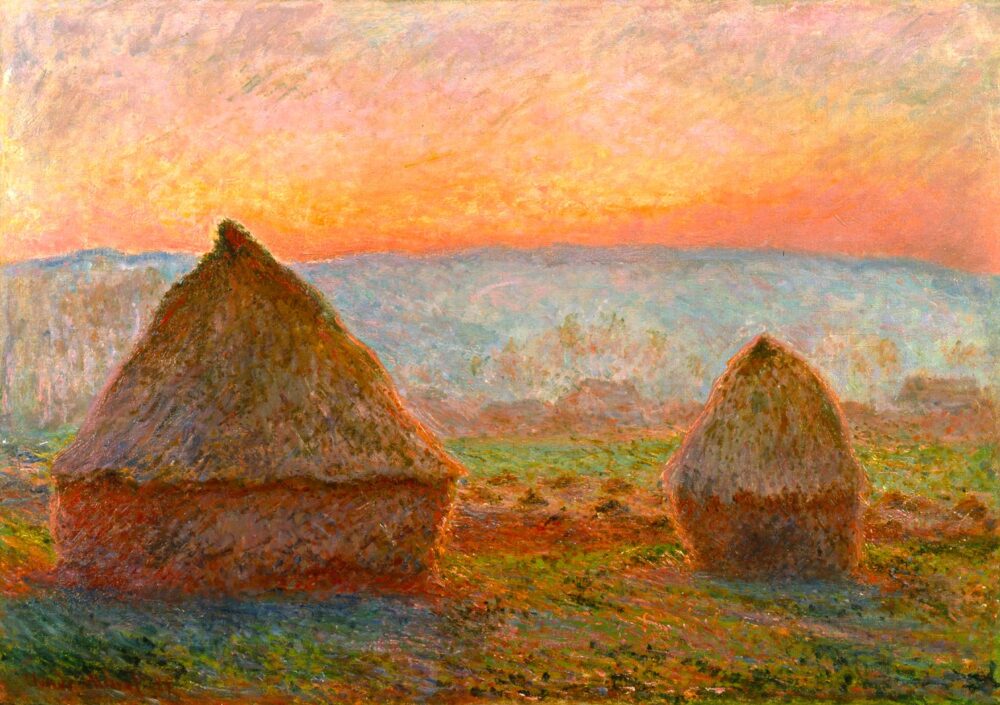
About This Work (Tap or Click to View)
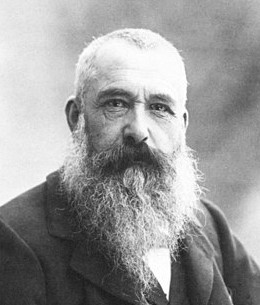
The Original “Haystacks”
Claude Monet, a master of French Impressionism, lived in the village of Giverny. There, he often painted the same scenes over and over to capture changes in light and atmosphere. One of his favorite subjects was the humble haystack.
This piece, Haystacks at Giverny, Sunset (1888–1889), is considered a forerunner of Monet’s famous “Haystacks” series. In a sense, it’s the “very first” haystack painting.
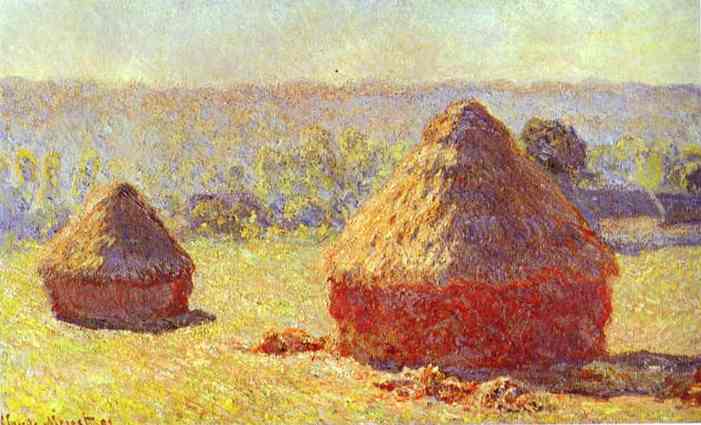
from Collection of the Musée d’Orsay
Painting the Color of Light
Monet didn’t just copy what he saw—he painted the light itself. He was fascinated by how light changed with the time of day, the weather, and the season.
In this painting, the sun is about to set, casting golden light behind the haystack. The edges glow orange, while the shadows reveal soft blues and greens. Monet’s brush captured that fleeting moment, when everything aligned—the sun’s angle, the clarity of the air, even the shape of the clouds. This work shows his obsession with preserving a single, perfect instant in time.
Claude Monet, “View from Rouelles” (1858)
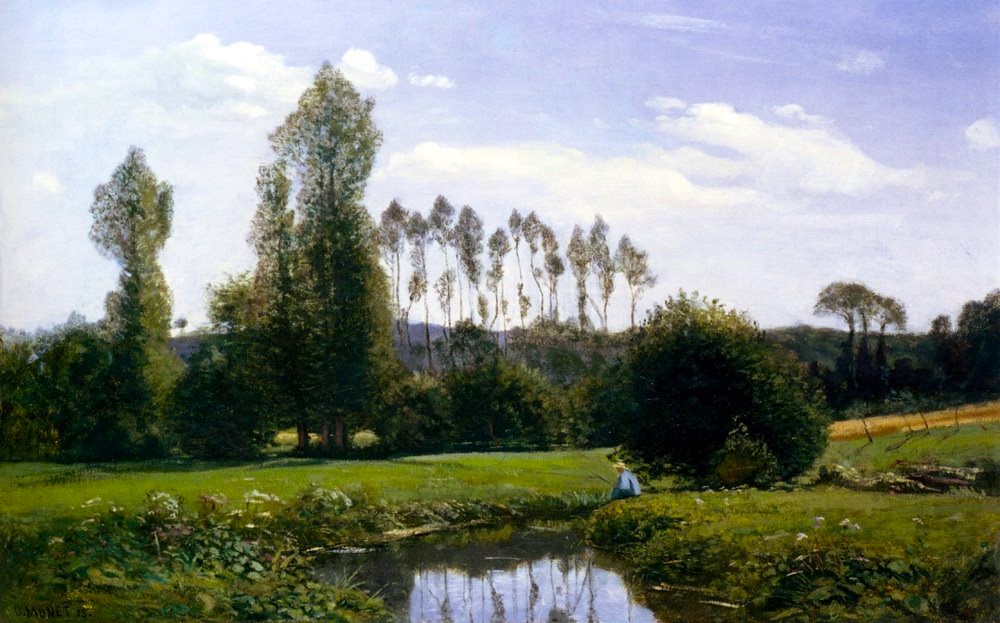
About This Work (Tap or Click to View)
Monet at Seventeen: Where It All Began
View from Rouelles is not officially part of the museum’s collection—it’s on loan from the Marunuma Art Park—but it is sometimes displayed at MOMAS. For Monet fans, it’s a rare treasure.
At first glance, it may not look like a typical Monet. But in the bottom left corner, you’ll see the signature “O. Monet”—from when he used his full name, Oscar-Claude Monet. He was just 17 years old when he painted this.
A Turning Point: Meeting Eugène Boudin
Monet was born in the port city of Le Havre and showed artistic talent from a young age, even selling caricatures. His life changed when he met landscape painter Eugène Boudin, who took him outdoors to paint in nature—a style called plein air painting.
View from Rouelles was painted during one of those early outings. Even then, you can see Monet’s sensitivity to light and air. The clear outlines, calm colors, and finely detailed trees and water show surprising maturity for such a young artist.
Early works by Monet are extremely rare and hold great importance in art history. This painting gives us a glimpse into the world seen by a young man who would later lead the Impressionist movement.
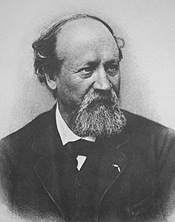
Camille Pissarro, “Girl Tending Cows at Eragny” (1884)
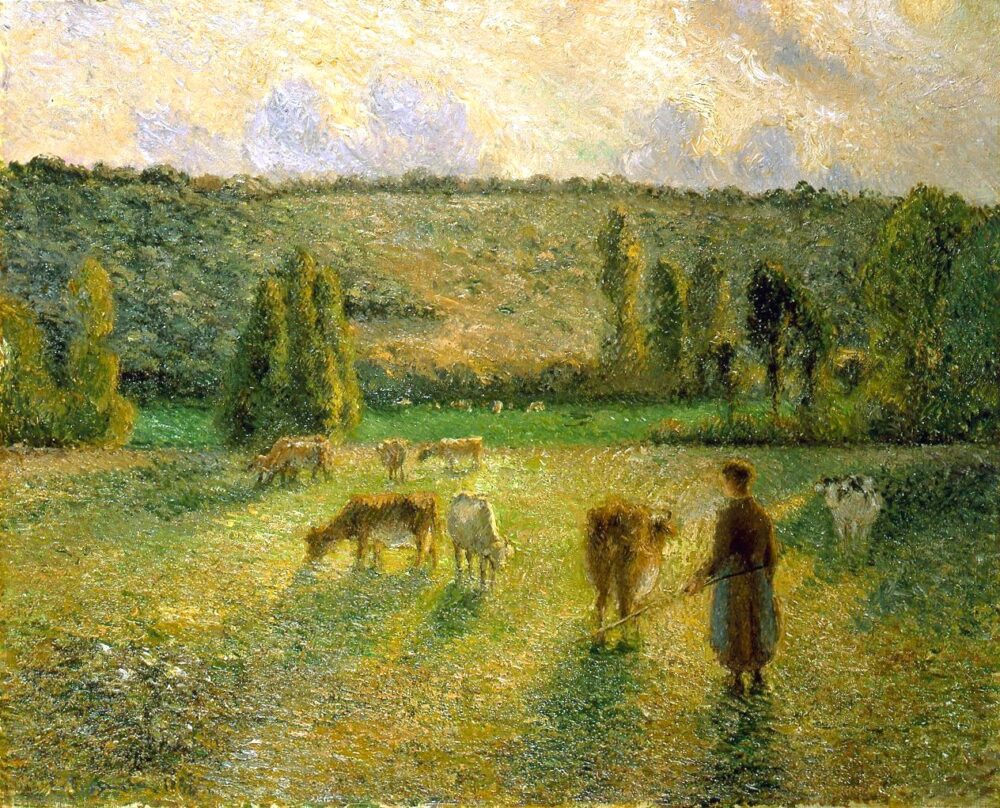
About This Work (Tap or Click to View)
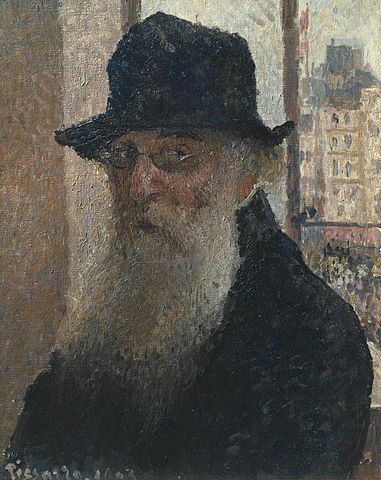
The Mentor of the Impressionists
Camille Pissarro was a respected leader among the French Impressionists. In a group known for frequent disagreements, Pissarro was a calming and unifying presence. He was also the only artist to exhibit in all eight of the official Impressionist exhibitions.
What made Pissarro remarkable was his openness to change. Even in his later years, he welcomed new ideas from younger artists, such as Georges Seurat and the Neo-Impressionists. He even adopted their pointillist techniques in his own work.
A Peaceful Life in Eragny
This painting, Girl Tending Cows at Eragny, was created in 1884, just before Pissarro began his close collaboration with the Neo-Impressionists. It shows a quiet scene in Eragny-sur-Epte, a village northwest of Paris, where he moved in 1884 and lived for the rest of his life.
Although this work doesn’t yet show full pointillist technique, you can already see delicate brushwork and an interest in capturing natural light. The soft shadows of the girl and calf stretch across the field in the warm glow of evening light. Time itself feels gently visible on the canvas.
Pissarro would later embrace pointillism, developing a denser and more structured style. But here, more than technique, what stands out is his deep affection for Eragny.
No matter how his painting style evolved, Pissarro always focused on peaceful scenes of people and nature living in harmony. This gentle view is beautifully reflected in this work.
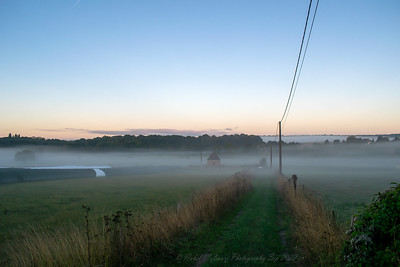
img: by Nabil Molinari
Maurice Denis “Rock of Trestrignel” (1920)
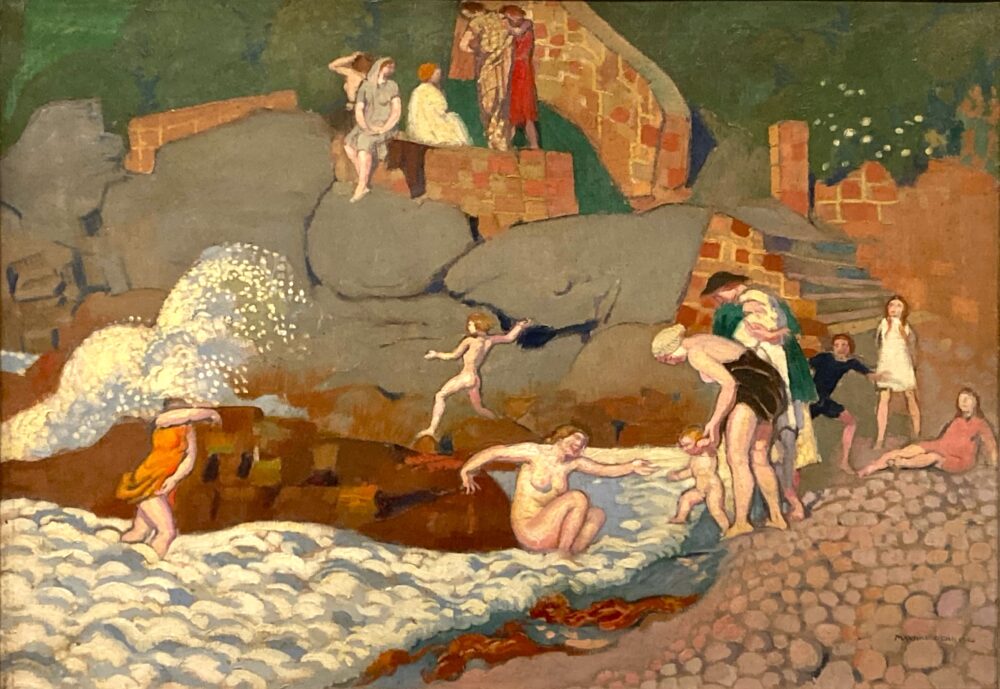
About This Work (Tap or Click to View)
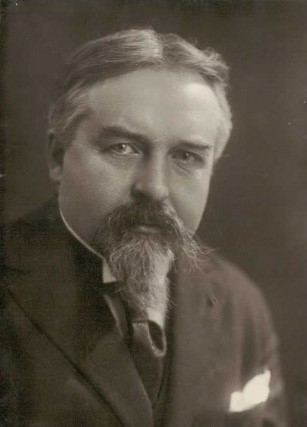
The Coast of Brittany, with Family
Maurice Denis, a key figure of the Nabis movement, spent many summers at his vacation home in Perros-Guirec, a coastal town in Brittany, France. There, he enjoyed the natural beauty of the region with family and friends.
This work shows the rocky coastline of nearby Trestrignel Beach. Gentle waves flow between the rocks, and people relax peacefully along the shore. The colors are soft and muted, yet the calm atmosphere and family-centered serenity come through clearly.
Flatness and Japonisme – Denis’s Artistic Signature
Denis was heavily influenced by Paul Gauguin’s Synthetism, a style that emphasized flat surfaces and decorative design. You can see these traits in this painting: the clearly outlined shapes, the subdued tones, and the balanced arrangement of color areas all contribute to a harmonious and refined composition.
Denis was also deeply inspired by Japanese art. The influence of Japonisme—a fascination with Japanese aesthetics that swept Europe at the time—is visible in this work. Look at the waves crashing against the rocks on the left side of the painting: they carry the rhythmic motion and dynamic form reminiscent of Katsushika Hokusai’s The Great Wave off Kanagawa.
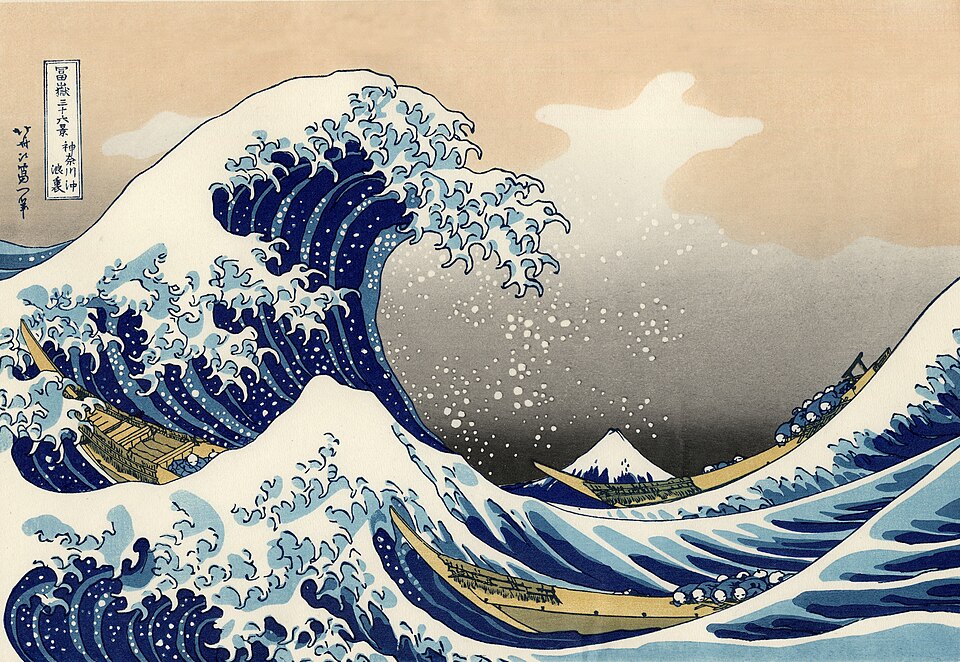
Toyosaku Saito, “Early Winter Morning” (1914)
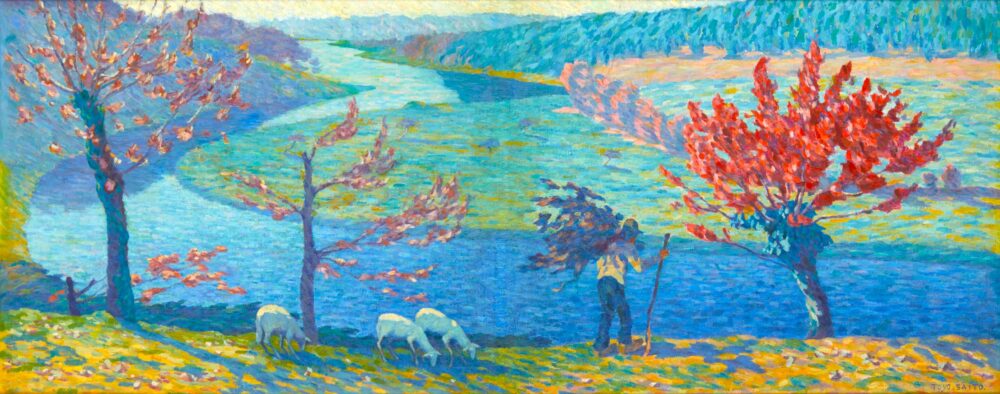
About This Work (Tap or Click to View)
A Local Painter from Saitama
Toyosaku Saito (1880–1951) was born in Koshigaya, Saitama Prefecture. He studied Western-style painting under Seiki Kuroda at the Tokyo Fine Arts School (now Tokyo University of the Arts), and later went to France, where he trained with Raphaël Collin. After returning to Japan in 1912, Saito co-founded the Nika Association in 1914 alongside artists like Ryuzaburo Umehara and Ikuma Arishima, helping shape the future of modern Western-style painting in Japan.
This work, Early Winter Morning, was shown at the first Nika Exhibition in 1914. It is said to have been painted from memory, inspired by the landscapes of Brittany, which Saito visited during his time in France.
Impressionist Technique with a Japanese Sensibility
The painting captures a quiet riverside scene on a chilly morning. You can sense the cool air and soft light throughout the wide canvas. His brushwork is delicate, using broken color and a technique close to pointillism—showing a strong influence from French Impressionism.
However, Saito’s style is not a simple copy of his French predecessors. He outlines forms more clearly, creating a more structured feel. Instead of blurring everything into light, he preserves the quiet stillness of the scene.
The horizontal composition, with a winding river drawing the eye into the background, adds depth. Vibrant autumn leaves in the foreground bring warmth to the chilly winter atmosphere.
Early Winter Morning is a perfect example of Saito’s ability to blend the beauty of nature with refined technique—calm, poetic, and quietly powerful.
Toyosaku Saito, “Decorative Painting: Lotus and Carp I” (1941)

About This Work (Tap or Click to View)
A Tranquil World Painted in Wartime
In 1920, Toyosaku Saito returned to France. He settled in a historic château in the Sarthe region, where he lived quietly and did not return to Japan. Choosing solitude over art world fame, he focused entirely on painting.
During World War II, as German forces approached Paris, Saito fled to the Dordogne region in southwestern France. It was during this time that he created Decorative Painting: Lotus and Carp I.
Moving Beyond Impressionism
In this work, the influence of Impressionism is less visible. Instead, Saito embraces a more decorative and flattened style, giving the piece an elegant, almost Japanese feel.
Bright red and yellow koi fish swim gently in the center of the canvas, their movement echoed by soft ripples and floating lotus leaves. The color palette is gentle and refined, creating a peaceful, harmonious atmosphere.
At the same time, flashes of near-fluorescent pink, yellow, and blue add rhythm and liveliness to the composition. These touches reveal Saito’s refined sense of color and his ability to blend restraint with playfulness.
Though far from the trends of the art world, Saito continued to paint quietly in the French countryside. This piece reflects the strength and calm of an artist who stayed true to his personal vision—even in uncertain times.
Conclusion: A Place Where Global Masterpieces Meet Local Talent
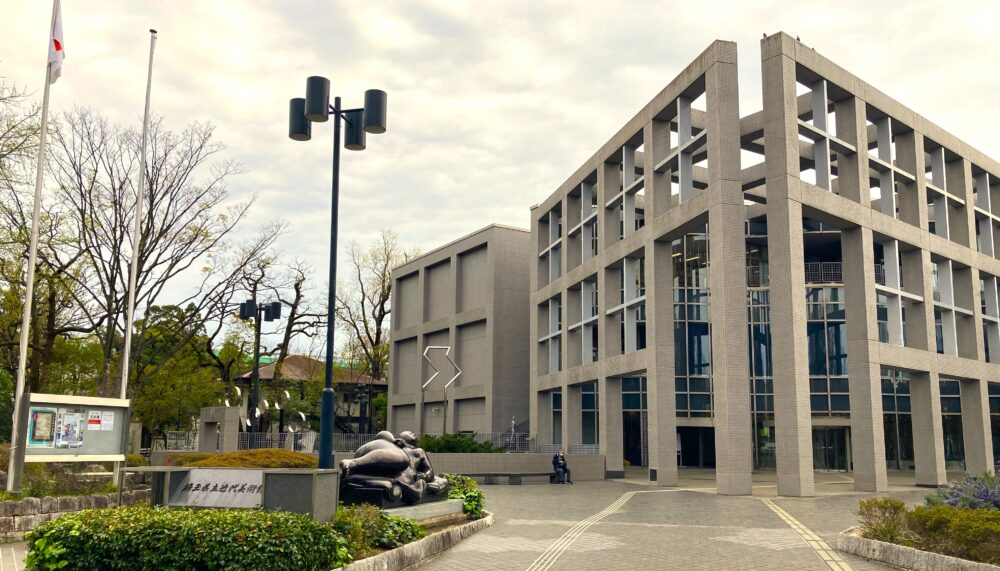
Located quietly inside Kita-Urawa Park, the Museum of Modern Art, Saitama (MOMAS) offers a calm and thoughtful space to enjoy a wide range of art—from French Impressionism and modern Japanese paintings to works by artists from Saitama.
What makes MOMAS truly special is how it presents both world-famous masterpieces and lesser-known works by local artists as equals within the same collection.
For example, one of the highlights is Claude Monet’s View of Rouelles, painted when he was just 17. It captures the young artist’s honest gaze toward nature—long before he became a leading figure of Impressionism. Alongside such renowned works, you’ll also find hidden gems by local painters like Toyosaku Saito, a Saitama-born artist who contributed greatly to the development of Western-style painting in Japan.
At MOMAS, you’re not guided by fame or local pride—you’re guided by the feeling of “This painting speaks to me.” That’s the real charm of this museum.
Even if you’re not an art expert, and even if you don’t recognize the artists’ names, that’s completely okay. MOMAS welcomes everyone. Here, you’re free to simply enjoy what you see and feel.
Museum of Modern Art, Saitama (MOMAS) – Visitor Information
Location: 9-30-1 Tokiwa, Urawa-ku, Saitama City, Saitama Prefecture, Japan


Comments